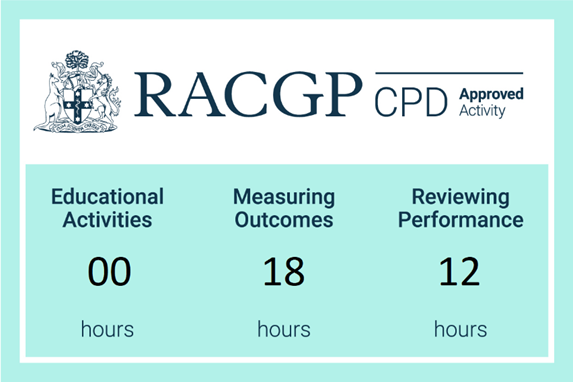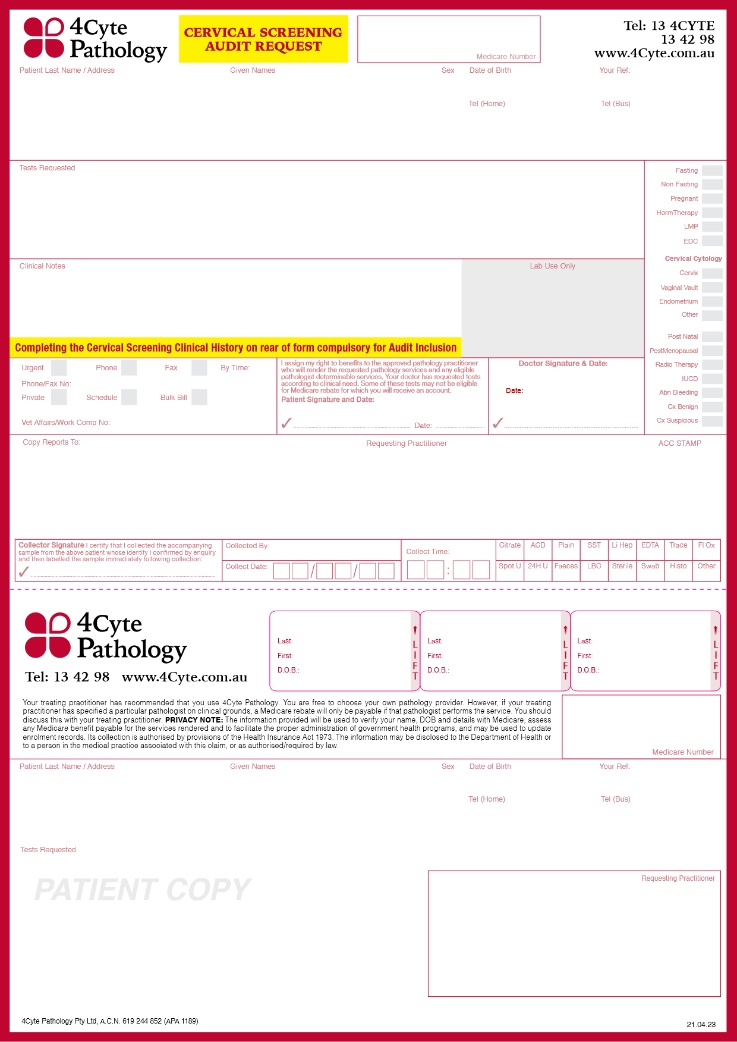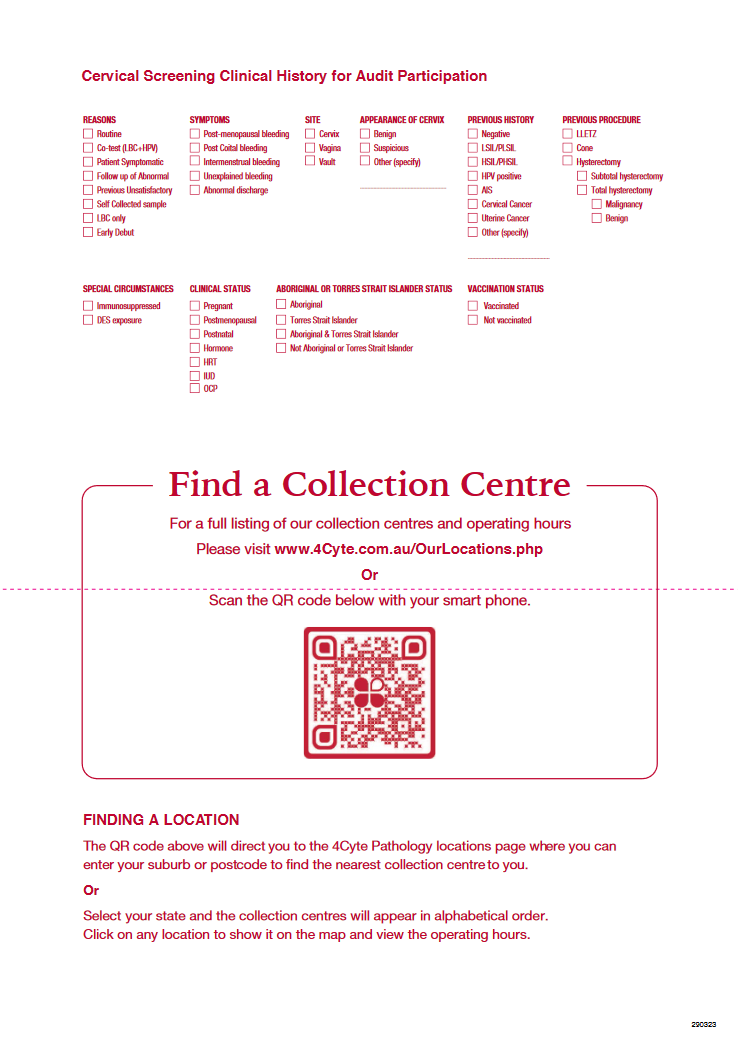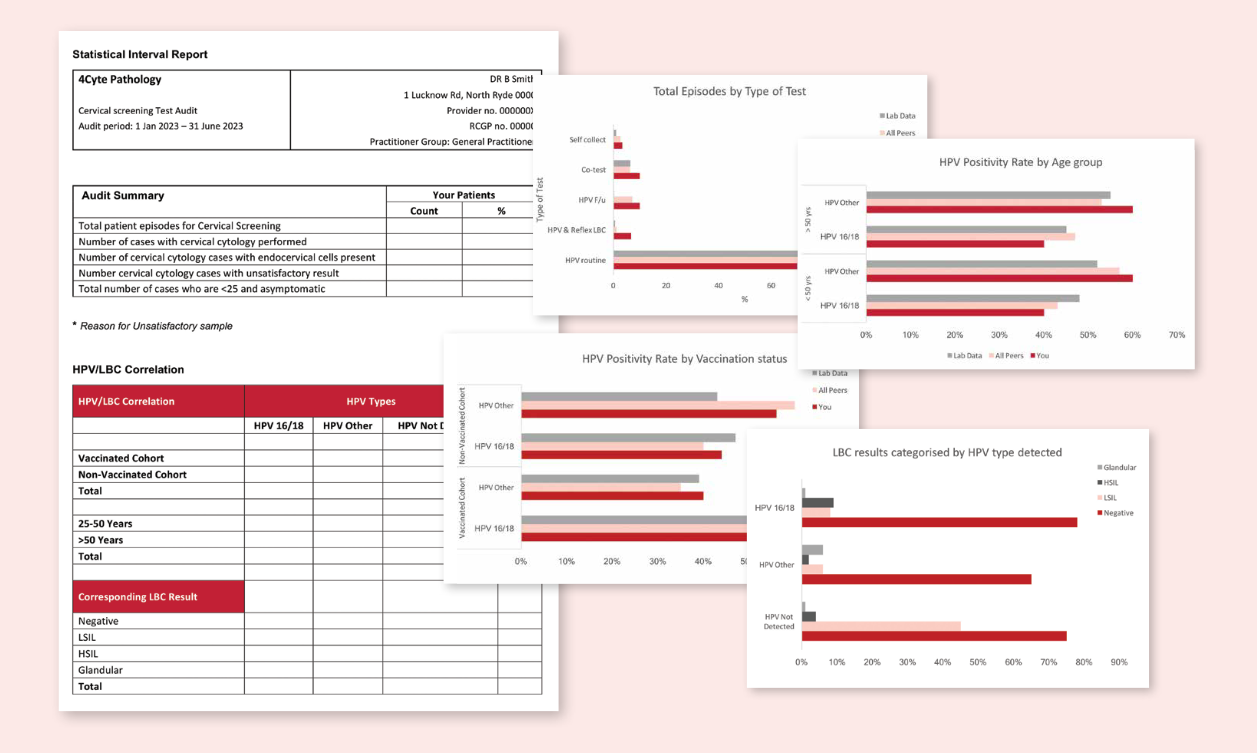Cervical Screening Test Audit
2023-2025 Triennium

The 4Cyte Pathology Cervical Screening Audit has been designed by doctors for doctors who screen women on behalf of the National Cancer Screening Programme (NCSP). Our Audit will help participants identify the various oncogenic HPV types and their correlation with cervical disease. Doctors will be able to assess the quality of their sample collection by reviewing the reasons for any inadequate tests. At 4Cyte Pathology, we offer a comparative review of your personal findings against your peers and the total laboratory data. Also, participants will receive a list of their patients with their recall recommendations to assist with patient management.
Why 4Cyte Cervical Screening Audit?
- Our Cervical Screening Audit was developed after conducting needs assessment with GPs. Learning objectives are measurable and relevant to general practice.
- Your Cervical Screening Audit reports will be delivered online and will be accessible at any time.
- You will be able to correlate cervical disease with associated oncogenic HPV types and determine the rate of routine, symptomatic and follow up tests.
- You will also be able to see what proportion of tests contain an endocervical component indicating that the transformation zone has been adequately sampled.
- All your patients' details will be deidentified for audit purposes to protect the privacy of patients.
How to Participate
Registration
To register, access the online version of our registration form (link). Alternatively, you can download the form (download). Once completed, please submit the form to education@4Cyte.com.au or fax to +61 2 8069 0601. Upon acceptance of the application, a username and password will be issued to access the 4Cyte online CPD portal.
Data Collection
Minimum 20 samples are required to be part of this audit. Cervical Screening specimens must accompany a completed request from. Forms are available on our website (download form) or you can order printed forms from your practice's 4Cyte representative.


Receive your Audit Reports
Every year two Statistical Interval Reports will be uploaded to your 4Cyte CPD Account. In this report all your data will be presented in graphs and tables for easy interpretation. These reports will contain peer group comparison and will assist you in analysing your findings against your peer groups and wider GP cohort. Twice a year, you will receive a list of your patients with their reports, recall dates and recommendations for the audit period and the previous six months. This will allow you to review your patient management and assist with patient follow up. The list of patients will be emailed to you with password protection for security reasons.
Submit your evaluation questionnaire
To get your CPD points you will have to review the reports and complete all evaluation questionnaires.
Your CPD Points
CPD hours will be uploaded by 4Cyte within 4 weeks upon completion of the audit.
CPD Program Qualification Criteria
-
To obtain your CPD points you will have to review both reports and complete all questionnaires.
-
Clinician-collected and self-collected CSTs count towards the minimum specimen requirement.
Audit Outcomes & Reporting
Statistical Interval report includes:
- Total patient episodes for cervical screening
- Total number of cases with cervical cytology performed.
- Number of cervical cytology cases with the presence of endocervical cells.
- Number cervical cytology cases with unsatisfactory result.
- Reasons for unsatisfactory samples.
- Total number of patients who are <25 years and asymptomatic with no previous abnormal result and no sexual debut before 14 years old.
- Total patient episodes by type of test.
- Total patient episodes by risk categories: low, intermediate, high, unsatisfactory, abnormal findings.
- HPV positive results grouped by age and vaccination status.
- LBC results categorised by HPV type detected

Learning Objectives
By the end of this activity, you will be able to:
- Compare your cervical screening test requesting profile with your peer group and total laboratory data (including gynaecologists and GPs).
- Identify the association between different HPV types and the cervical cytological findings for your patients.
- Evaluate your sampling technique.
- Compare the prevalence of HPV types within your patient population against the general population.
- Identify deviations from NCSP guidelines, specifically CST on women under 25 who are not eligible for screening.
- Evaluate your practice adherence to patient management recommendations.
- Ensure that your practice aligns with current National Cervical Screening Program (NCSP) guidelines.
- Demonstrate, through audit activities, that you are maintaining your clinical proficiency expertise.